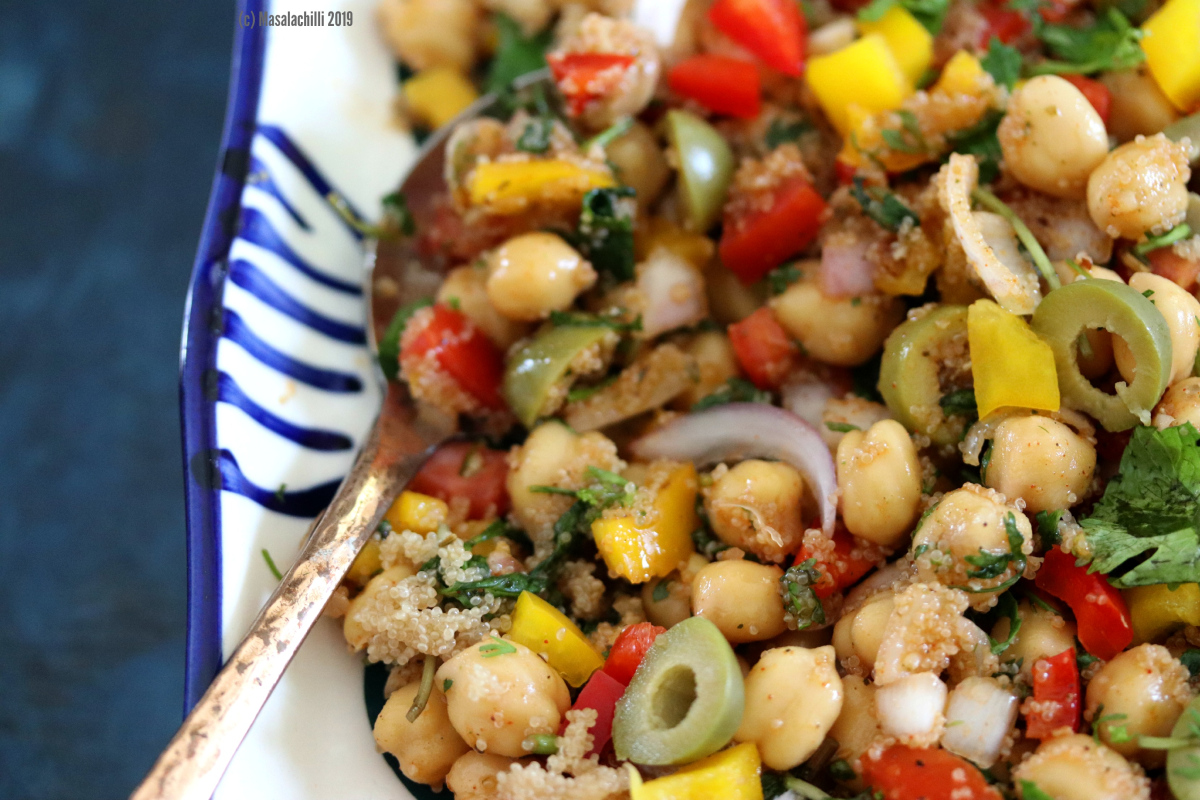















































Ingredients:
Amaranth - cup, Soaked chickpeas - 1 cup, Boiled corn kernels - ½ cup, Boiled green peas - ½ cup, Red bell pepper, finely sliced 1 tbsp, Olive oil - 1 tbsp, Lime juice - 1 tsp, Dried thyme leaves - ½ tsp, Rock salt and pepper - To taste .
Preparation Method:
